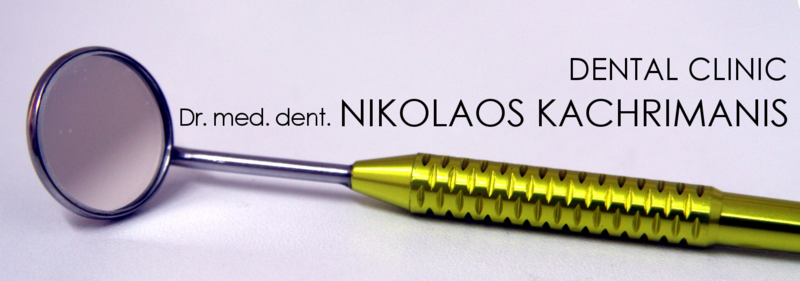PhD
Title:
Research Institutions:
CHARITÉ- Universitaetsmedizin Berlin,
CC3 Dental Materials Science and Biomaterials Research Group
Germany
in cooperation with
Department of Biomaterials
Max-Planck Institute for Colloids and Interfaces,
Potsdam, Germany
Duration: 10/2009 - 10/2013
Supervisory:
Charité: Priv.-Doz. Dr. rer. nat. W.-D. Müller
Max Planck Institute
for Colloids and Interfaces: Dr. Paul Zaslansky, DMD, PhD
Presentations:
- Kachrimanis N, Zaslansky P, Müller WD: Nanometer deformations of wet and dry composites determined by Speckle Interferometry, Poster, Annual Meeting of the ADM 07-09.10.2010, Trieste, Italy.
- Kachrimanis N, Zaslansky P, Müller WD: A post-cure nano-scale shrinkage study of dry and wet stored composite. Poster, 45th Meeting of the CED-IADR with the Scandinavian Division 31.08-03.09.2011, Budapest, Hungary.
Summary:
The submicron dimensional behavior of post cure dental composites: an Electronic Speckle Pattern-correlation Interferometry study
The high qualities of dental composite resins have established them as first choice materials for direct filling restorations. However their longevity is highly dependent on the integrity of the adhesive interface between the restoration and the tooth. This interface is in turn influenced by the dimensional behavior of the material and its response to the various conditions in the mouth.
The composite fillings have to operate in a wet environment under constant thermal fluctuations. Phenomena like water absorption and elution of chemical species from the material, post- polymerization and changes of the temperature are strongly influencing the dimensional behavior of the material posing a challenge to the adhesive interface.
In order to be able to investigate the impact of these phenomena on the dimensions of the material, and since the magnitude of these deformations is very small a very sensitive method should be applied. Electronic Speckle Pattern- correlation Interferomentry (ESPI) is a non- contact, non destructive optical method for measuring small deformations of surfaces taking place in a range of 20 nm to 2 μm, being therefore suitable for performing this kind of measurements.
The aim of this study was to measure the actual deformations of the composite when heated up to 37°C and to investigate the different impact of the factors influencing the dimensional behavior of the material. Accordingly, through these measurements the potential of ESPI for conducting small scale recordings of the deformations taking place in composite materials would be determined and a measurement protocol would be established in order to standardize this procedure.
In this frame, two materials were chosen, Admira (VOCO, Cuxhaven) for the preliminary measurements and Grandio (VOCO, Cuxhaven) for the main deformation measurements. Each specimen was stored dry (ambient conditions) or wet (water) for particular durations before measurement. The deformations taking place as the specimen was heated from 26°C to 37°C were recorded, with each recording lasting 27 min, corresponding to 400 measurements over the surface. Comparisons were made between the deformations recorded for the various groups.
The impact of water absorption and post polymerization over the dimensional behavior of the material was investigated with ESPI, as well as the time frame in which these phenomena exert their influence. Additional measurements into this direction included microindentation tests and measurements of the weight. The possibility of water preexisting inside the dry specimens was also examined.
Through the measurements with the ESPI it was demonstrated, that as temperature rose from 26°C up to 37°C, following an initial expansion all specimens shrank for the duration of the measurement (-0.05%≤deformation≤-0.011%).
The largest and most dramatic dimensional response of the material was exerted at the first 24 hours after polymerization, regardless of the storage medium. 72 hours after polymerization the material showed the greatest stability. For storages longer than 72 hours and up to 1 month, the shrinkage values started rising again.
Evidently, the first 24 hours are overall the most important for the dimensional behavior of the material. The shrinkage exhibited as a result of the rise of the temperature is the most statistically significant, even when this rise is only up to mouth temperature. During this time post- polymerization is exerting the highest influence. 72 hours after polymerization, on the contrary, the impact of water absorption is greater than that of post- polymerization.
Through all these measurements it was demonstrated that ESPI is capable of measuring nanometer deformations and minute strains related to the molecular dynamics of the composites, relevant to the clinical conditions where these materials are used. Through the measurements with the ESPI, a measurement protocol was established standardizing the method for future investigations.
